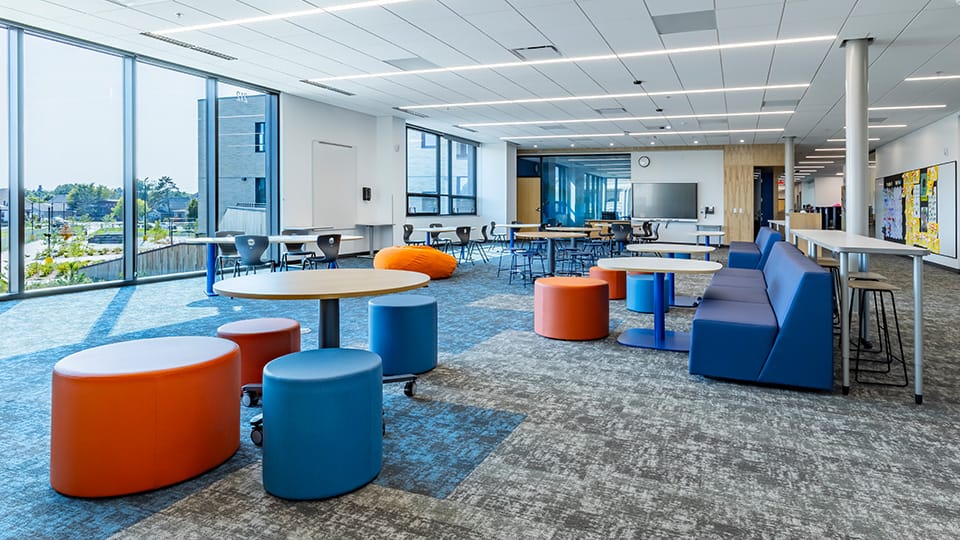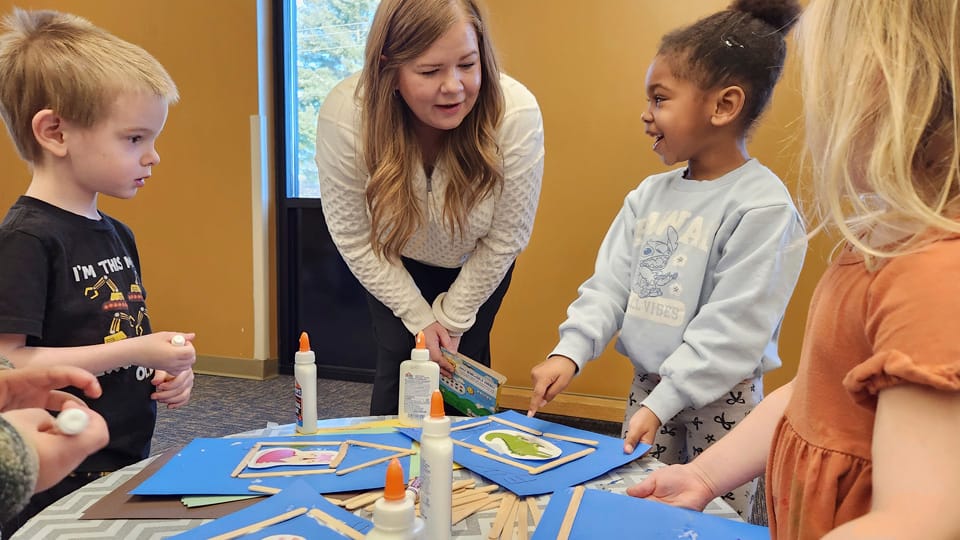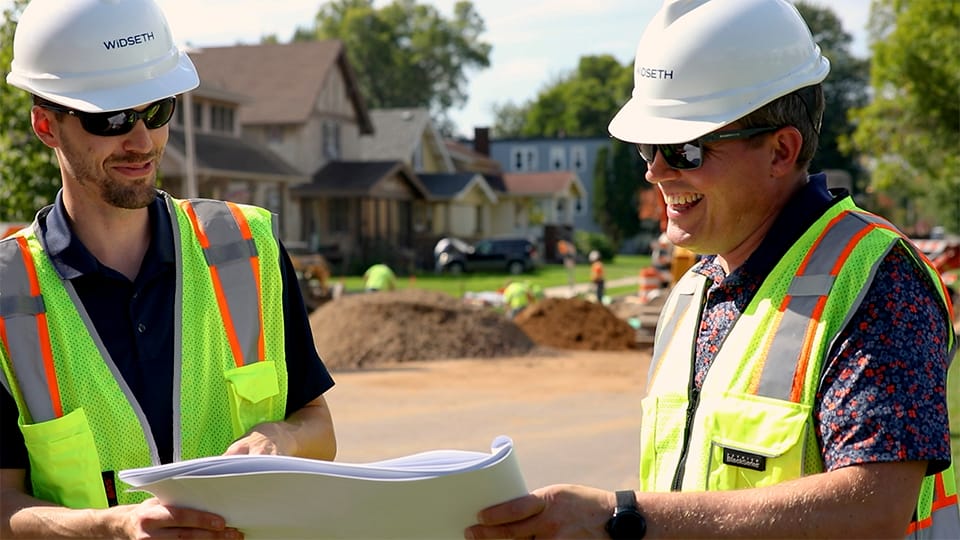Today’s K-12 classrooms are evolving faster than ever. Rigid rows of desks and chalkboards have given way to adaptable spaces designed to support collaboration, creativity, and student-centered learning. But not every “flexible” solution delivers on its promise. So, what really works in a 21st-century learning environment—and what doesn’t?
What Works
1. Movable Furniture and Modular Layouts
Desks on wheels, stackable chairs, and mobile teacher stations are all examples of flexible classroom components. Flexible furniture allows educators to quickly reconfigure a room to support group work, independent study, or full-class discussion. This adaptability encourages dynamic teaching styles and gives students a sense of ownership over their learning environment.
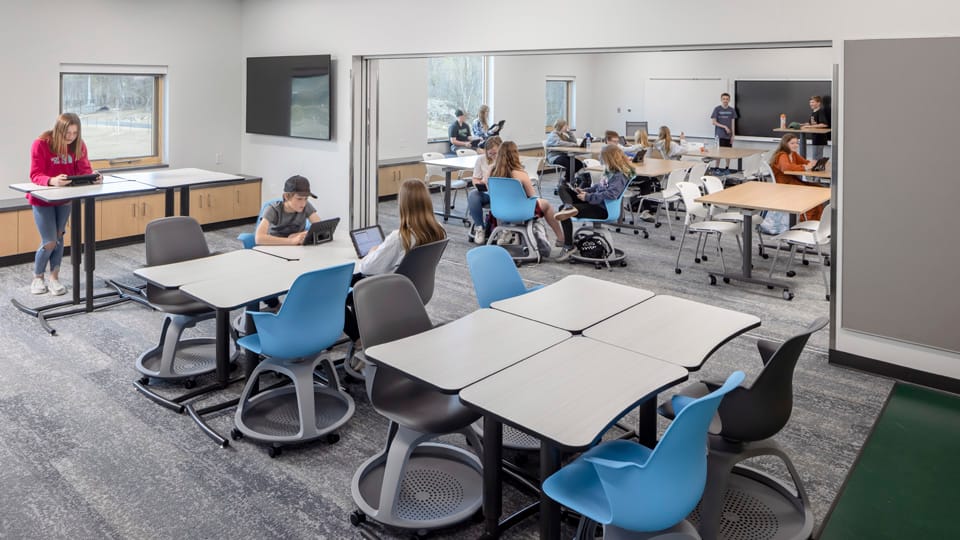
Laurentian Elementary School in Eveleth, MN. Designed in collaboration with Cuningham.
2. Zones for Different Learning Styles
Successful flexible classrooms often feature designated zones for various learning activities—quiet corners for focused work, soft seating for reading, and open areas for project-based collaboration. This spatial variety accommodates a range of learning preferences and can help students feel more engaged and comfortable.
3. Access to Technology—When It’s Seamless
When properly integrated, technology enhances flexibility. Charging stations, mobile devices, and wireless connectivity allow students and teachers to move fluidly between digital and physical learning. But the key is seamless integration—tech that’s clunky or unreliable can disrupt rather than support flexible learning.
4. Ample Storage and Organization
Flexibility requires thoughtful infrastructure. Classrooms that work well have plenty of built-in storage, so that flexible tools are accessible without creating clutter. Storage also supports quick transitions between different teaching modes.
5. Connection to Outdoor Learning
Spaces that extend learning beyond the classroom, such as outdoor courtyards, offer even more flexibility. These environments can stimulate creativity, support physical movement, and enhance engagement, especially for younger students or kinesthetic learners.
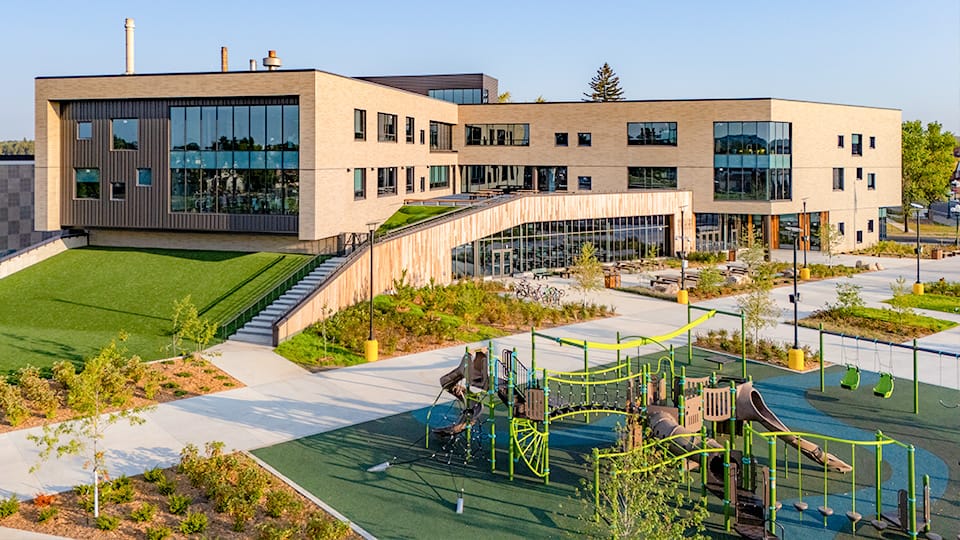
North Star Elementary School in Virginia, MN. Designed in collaboration with Cuningham.
What Doesn’t Work
1. Flexibility Without Purpose
Simply removing walls or adding mobile furniture doesn’t guarantee better outcomes. When flexibility isn’t aligned with curriculum goals or teaching methods, it can lead to confusion, distractions, or underused space. Design should follow instruction—not the other way around.
2. Overcomplicated Tech
Smartboards, touchscreen walls, and app-controlled lighting can be impressive—but if staff aren’t trained or if systems frequently malfunction, the technology becomes a burden. Tech tools should enhance—not dominate—the learning environment.
3. Lack of Acoustic Control
Open or flexible classrooms often struggle with noise. Without proper acoustic design (like sound-absorbing materials or flexible dividers), group work and active learning can become overwhelming, especially for students with sensory sensitivities or attention challenges.
4. Inadequate Storage or Power Access
Even the best-designed flexible spaces can fall short if they lack practical elements. Without enough outlets, charging stations, or organized storage, classrooms can quickly become chaotic and unproductive.
5. Ignoring Teacher Needs
Too often, designs focus solely on student experience and overlook the practical needs of teachers. Educators need flexible tools too—places to prep materials, options for personal storage, and zones for one-on-one interaction with students.
Flexible Classrooms Enhance Learning
Flexibility in classroom design isn’t about chasing trends—it’s about creating spaces that truly support teaching and learning. When thoughtfully designed, flexible learning environments can empower both students and teachers. But without a clear strategy, they risk becoming well-intentioned experiments that don’t deliver real results.
The most successful 21st-century classrooms are those where design and teaching work hand in hand—spaces that are not just adaptable, but purposeful, practical, and inspiring.
